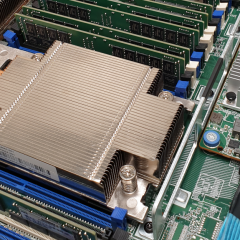Manually ‘Installing’ Microsoft Integration Services Drivers
KB ID 0001512 Problem If your OS is 2008R2 or newer then you wont need to do this as the drivers are already included. But what if you have a machine that you want to put the drivers in before you virtualise or migrate it. Well if you mount the ISO and run it this happens; Unsupported Guest Environment The Hyper-V integration services can only be installed inside of a virtual machine running Hyper-V Bah! You are not the boss of me! I...
Upgrading vSphere ESXi Hosts (Including HP and Dell)
KB ID 0001343 Problem Before you think about upgrading your hosts, you should upgrade your vCenter, Upgrade vSphere vCenter Appliance Assuming that’s all done, your task now is to upgrade your hosts, if you have a vanilla VMware ESXi version installed. You COULD simply SSH into the host, and execute the following commands; esxcli network firewall ruleset set -e true -r httpClient esxcli software profile install -p...
Windows – Location Based Printing with con2prt
KB ID 0000510 Problem Yes these days we would prefer to use GPO or GPP to do this, but some printers simply refuse to be farmed out this way, and a lot of clients don’t want to install their network printers in that manner. Con2prt is a very old piece of software it’s part of the Windows NT4 ZAK (Yep it’s that old!). Its purpose in life is to connect clients to printers. So how can we do that based on location? We...
Windows – Getting Drivers for ‘Unknown Device’ or ‘Base System Device’
KB ID 0000699 Problem There’s nothing more annoying, you have just rebuilt your PC and you are missing some drivers. Everything appears to be working but there’s one (or more) devices in Device Manager with a yellow exclamation mark over them called ‘Unknown Device’ or ‘Base System Device”. Solution This solution is not a ‘Fix All’ for all situations, but it will point you in the right...
VMware ESX – WDS Fails “The network location cannot be reached”
KB ID 0000308 Problem Whilst trying to contact a WDS server from an ESX client machine (though this can happen on a physical machine also). You see the following error, The network location cannot be reached, For information about network troubleshooting, se Windows Help. Solution This is because the WindowsPE image you are using to Capture/Deploy does not have the network drivers for the NIC in the machine you are imaging (At...





